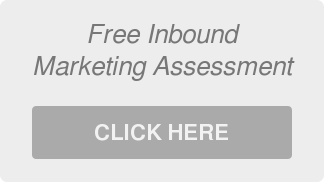 Increasing conversions is one of the top priorities of B2B marketers and proper list segmentation is one of the best ways to do so. Taking an extensive contact database and splitting it up into targeted segments can be a difficult task but the results will be well worth the effort. There are several different ways you can divvy up your lists, here are a few to get started.
Increasing conversions is one of the top priorities of B2B marketers and proper list segmentation is one of the best ways to do so. Taking an extensive contact database and splitting it up into targeted segments can be a difficult task but the results will be well worth the effort. There are several different ways you can divvy up your lists, here are a few to get started.
Industry/Vertical
Chances are your company targets multiple verticals that may all have slightly different pain points. Even if you’re offering them the same solution, speaking to the specific needs of a particular industry and segmenting your lists in that fashion will help you provide more relevant content. Additionally, a particular product may fit a certain group of industries and combining those segments will help you get the most out of your content or offer.
Job Title/Role
Reaching out to people that are in a position to make a purchase decision is one of the most effective ways to increase conversions. Segmenting your lists by job title or role will ensure you’re not reaching out to lower level contacts who have little to no influence on purchasing decisions.
Buyer Persona
If you’ve done any kind of inbound marketing, chances are you’ve developed a few buyer personas based on your ideal customers. Segmenting these lists will allow you to use those personas to develop content that truly strikes a nerve with your audience.
Content Topic
You may have a wide array of prospects interested in the same subject matter in which case segmenting your lists by topic can make sense. Topics can also be used to further refine lists that have already been segmented in other ways listed in this article.
Buying Cycle
One of the great aspects of inbound marketing is that it allows you to identify whether a prospect is in the top, middle or bottom of the funnel. Creating content aimed at each stage of the funnel is a core component of an inbound marketing strategy. Segmenting your lists accordingly will help you reach buyers at the right time with the right information.
Online Vs. Offline
The outreach to prospects gathered through content downloads will differ greatly from that of potential clients you engaged with at a live event. If you’ve already had a conversation with someone or have a group that you presented to you will want to use that information to personalize your messaging.
Current Clients
Current clients don’t necessarily need to know your merits or experience since a relationship has already been established. Segmenting lists of current clients will allow you to offer complimentary products or services and introduce new ones to already loyal customers. This outreach may include special offers or specific add-ons for previously purchased items.
Company Size
Certain solutions will only be a fit for a particular company size and you may have different pricing for bulk purchases that will only appeal to larger organizations. Sending an offer to a small business advertising bulk prices may alienate a prospect even if they are interested in the product or service, only in a smaller quantity.
Qualifying Questions
Qualifying questions on download forms are a great way to segment your audience and feed them relevant content and offers. These questions help to identify pain points, decision making ability, job function and anything else that helps to determine whether or not a prospect is a proper fit for any of your solutions.
Event Attendance
Content developed around an event that you attended or hosted is a great way to personalize your messaging and grab the attention of your audience. Prospects will be inclined to open emails that relate to an event they have attended. This can help you nurture prospects you met at the event and reach out to those you may not have had a chance to speak with.
Click Below To Schedule Your Free Inbound Marketing Assessment





